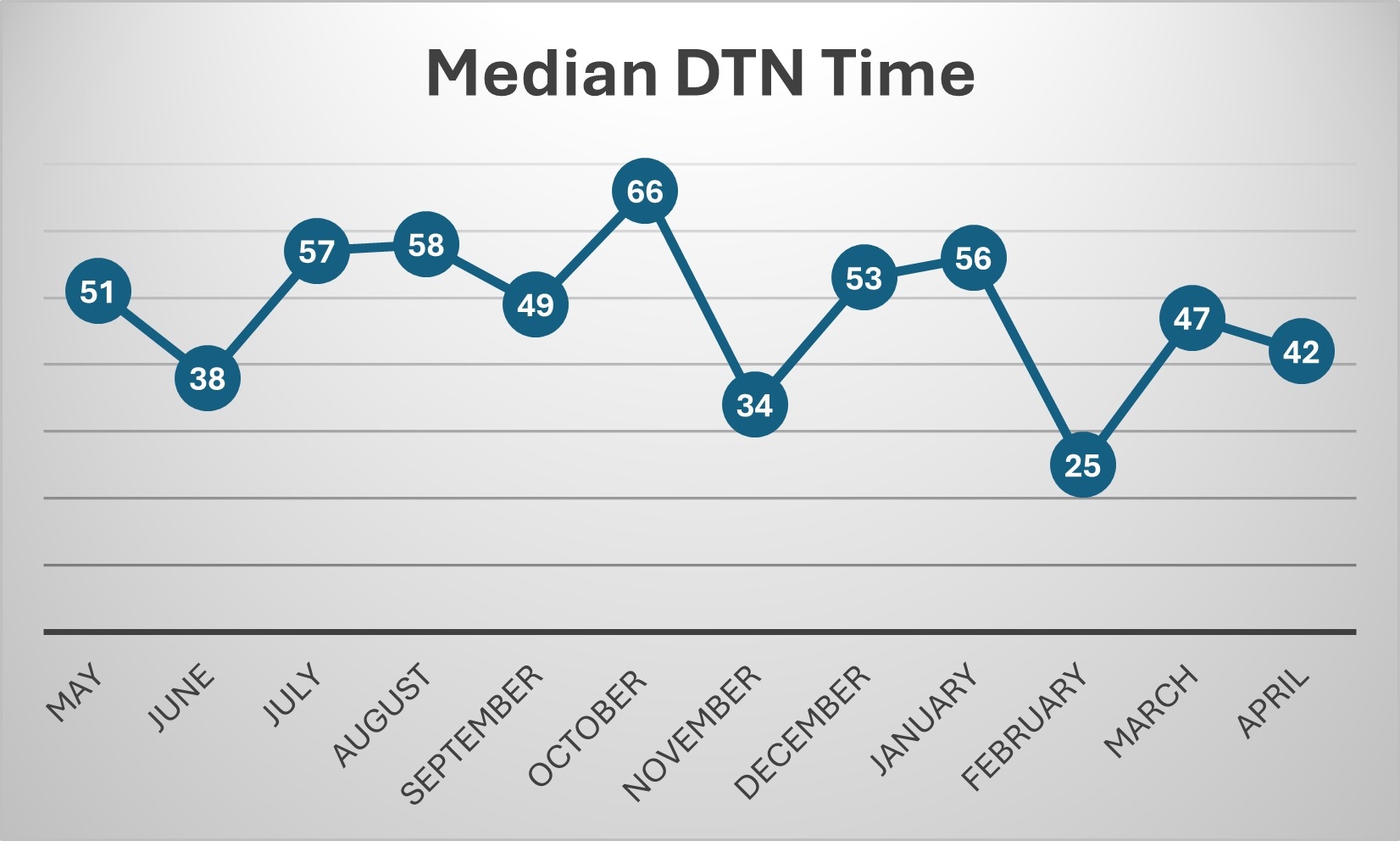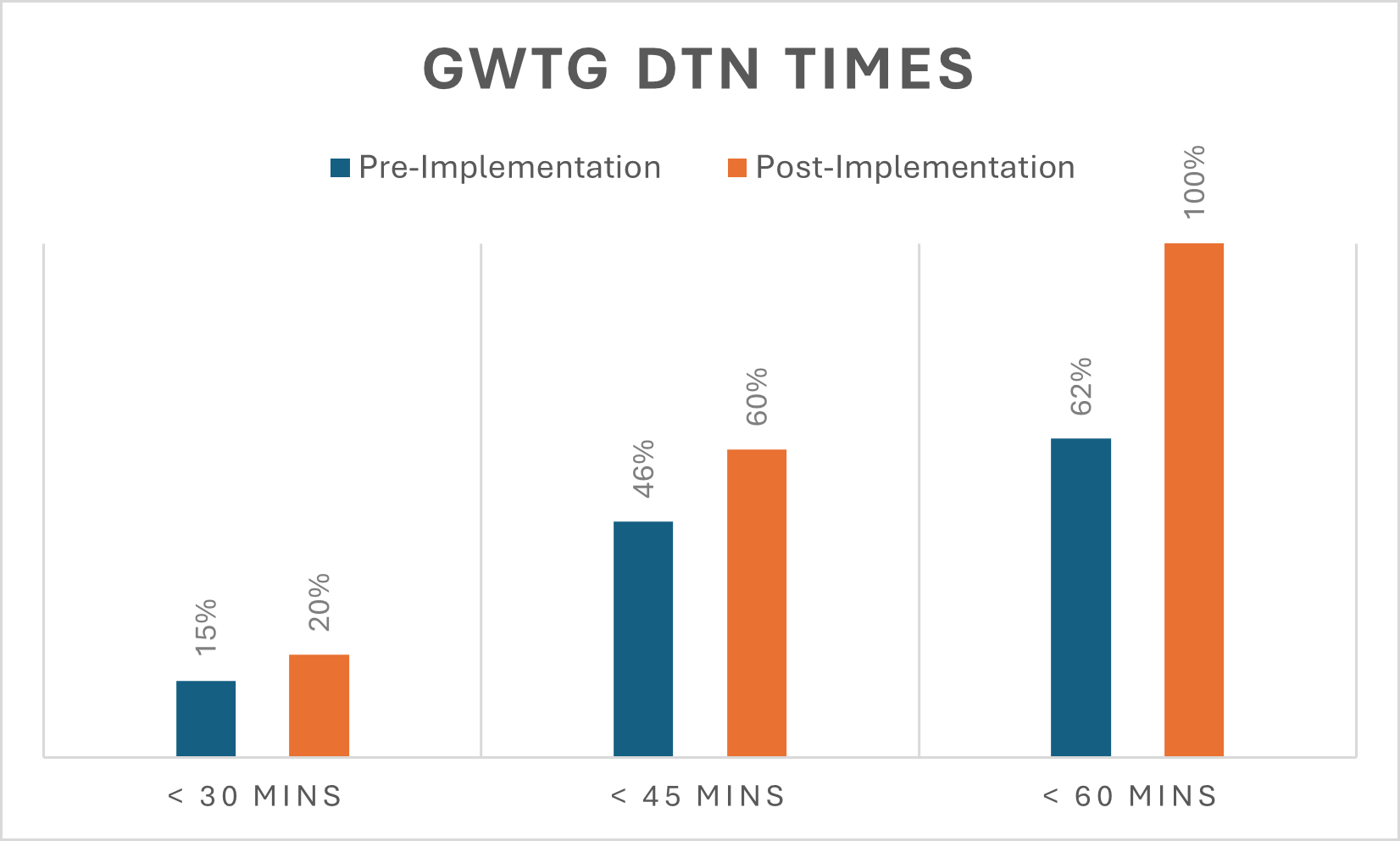Final ID: TP51
Uniting Forces: A Collaborative Approach to Enhancing Door-to-Needle Efficiency for Acute Stroke
Purpose: Implementation of a bundle with a goal of reducing DTN times and improving interdisciplinary communication and collaboration at a single comprehensive stroke center.
Methods/Design: A multidisciplinary stakeholder group including representatives from nursing, emergency medicine, vascular neurology, pharmacy, patient registration, radiology, emergency medical services, and the stroke program, developed an action plan. Due to the urgent need to address the issue, several initiatives were introduced simultaneously as a bundled approach. All interventions were at no cost to the institution. The bundle included: an interdisciplinary huddle for every Code Stroke alert; clock to travel with the patient; BP monitor/IV equipment in the CT area; streamlining the registration process; reinstating a unit-based stroke committee; increased communication, transparency, and recognition of performance with ED staff. A post-implementation survey was disseminated to the ED and stroke teams. Data was compared 6 months pre-implementation of the bundle to 6 months post-implementation. Patients that received tenecteplase were included, regardless of final diagnosis. If patients met valid exclusion criteria for time-based goals according to GWTG, they were excluded. Pre-implementation n = 21, post-implementation n =20.
Results: Pre-implementation: median DTN: 53 minutes, mean DTN: 56 minutes. Post-implementation: median DTN: 47 minutes, mean: 47 minutes. This demonstrated a 10% decrease in median DTN, and a 15% decrease in mean DTN. The center is currently achieving their goal DTN 100% of the time for GWTG cases, improved from 69.2%. When looking at each level of GWTG Honor Roll status, pre-implementation was: 15% of cases <30 minutes, 46% <45 minutes, and 62% < 60 minutes. Post-implementation was: 20% of cases <30 minutes,60% <45 minutes, 100% <60 minutes. Better communication was reported by 100% of survey respondents.
Conclusion: The implementation of the bundle significantly reduced DTN times and improved interdisciplinary communication. Staff feedback has been positive, and all components of the bundle are sustainable.
More abstracts on this topic:
Montalvan Victor, Hendley Katie, Zurasky John, Albers Greg, Tan Yuanyuan, Marginean Horia, Neves Gabriel, Ota Riichi, Hernandez Roberto, Barnes Robert, Brister Rorie, Chintakayala Laxmi
Assessment of Limited English Proficiency on Door To Imaging TimeCort Mark, Sharrief Anjail, Trang Ivan, Nguyen Courtney, Wang Mengxi, Flake-rojas Mariel, Cooksey Gail, Carter Caitlynn, Okpala Munachi, Yamal Jose-miguel
Readers' Comments
We encourage you to enter the discussion by posting your comments and questions below.
Presenters will be notified of your post so that they can respond as appropriate.
This discussion platform is provided to foster engagement, and simulate conversation and knowledge sharing.
You have to be authorized to post a comment. Please, Login or Signup.


